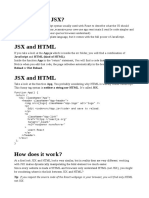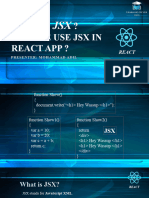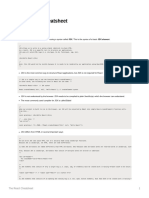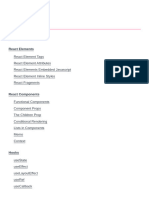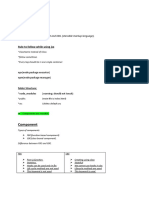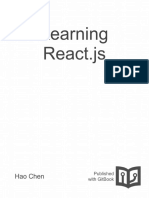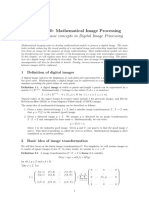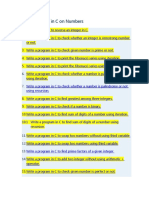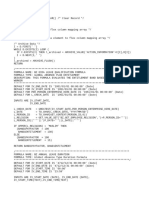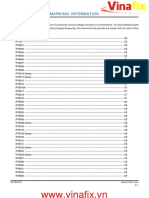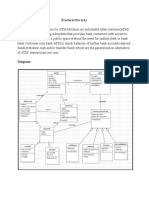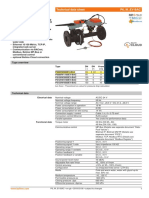0% found this document useful (0 votes)
9 views2 pagesHTML To JSX Conversion Guide
This document serves as a reference for converting HTML tags and attributes into their JSX equivalents, outlining key syntax rules. It details that most HTML tags remain unchanged in JSX, while attributes require camelCase formatting and self-closing tags must end with a '/'. Additionally, it provides a conversion table and important notes regarding JSX usage, such as handling inline styles and JavaScript expressions.
Uploaded by
suryar4196Copyright
© © All Rights Reserved
We take content rights seriously. If you suspect this is your content, claim it here.
Available Formats
Download as PDF, TXT or read online on Scribd
0% found this document useful (0 votes)
9 views2 pagesHTML To JSX Conversion Guide
This document serves as a reference for converting HTML tags and attributes into their JSX equivalents, outlining key syntax rules. It details that most HTML tags remain unchanged in JSX, while attributes require camelCase formatting and self-closing tags must end with a '/'. Additionally, it provides a conversion table and important notes regarding JSX usage, such as handling inline styles and JavaScript expressions.
Uploaded by
suryar4196Copyright
© © All Rights Reserved
We take content rights seriously. If you suspect this is your content, claim it here.
Available Formats
Download as PDF, TXT or read online on Scribd
/ 2

